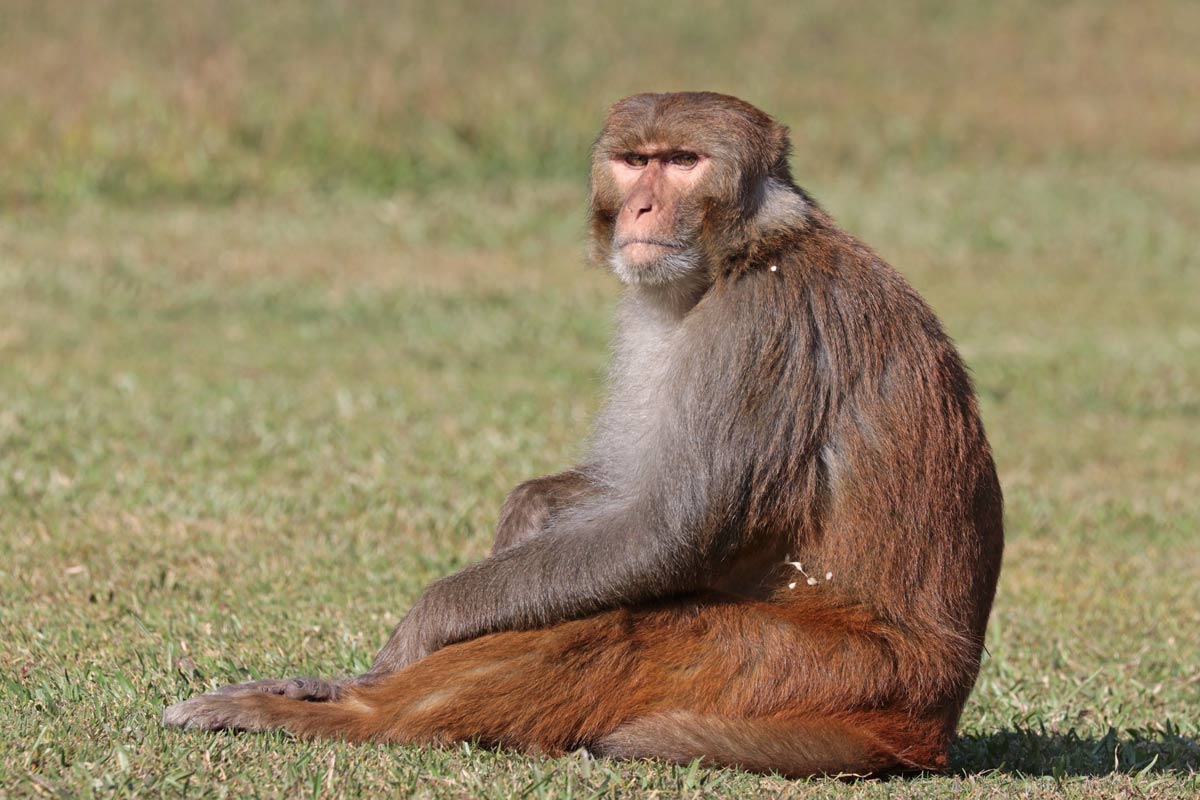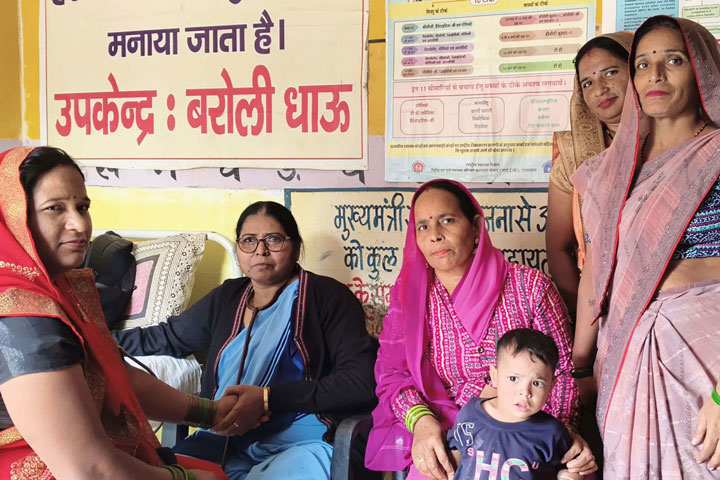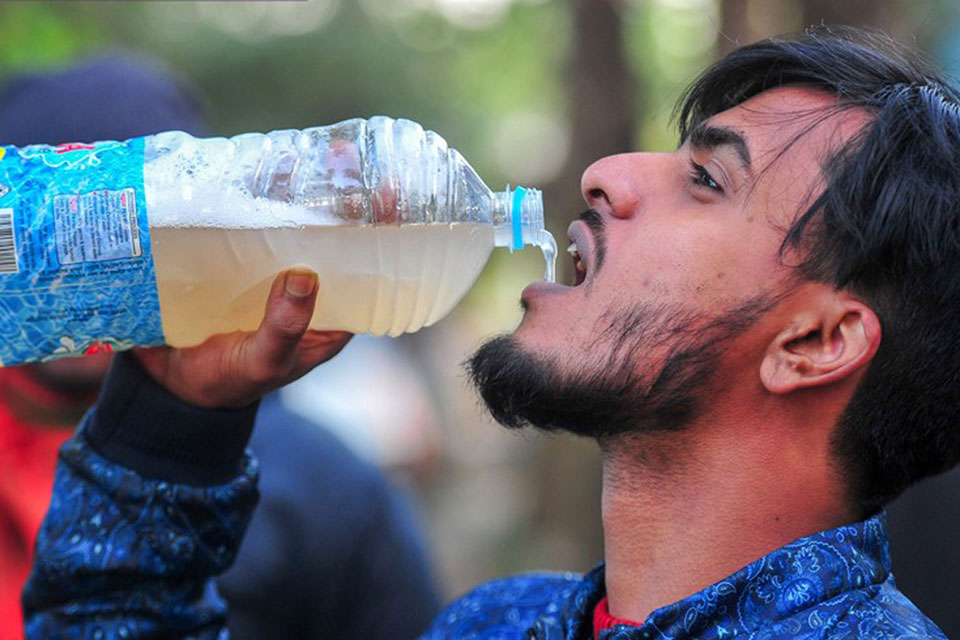From macaque to man: the growing threat of zoonotic malaria
A malaria parasite that usually infects monkeys and apes is increasingly infecting humans in Southeast Asia, threatening malaria elimination efforts.
- 29 November 2024
- 10 min read
- by Linda Geddes

In November 2017, a rubber plantation worker from Southern Thailand arrived at a malaria clinic in Na Thawi district near the border with Malaysia, following six days of fever, chills and headaches.
He had fallen ill after camping out in a forest populated by wild macaques. When laboratory workers examined his blood cells under a microscope, they saw what appeared to be Plasmodium vivax parasites – the leading cause of malaria in Southeast Asia.
Yet, something wasn’t right. Usually, blood cells infected with these parasites are enlarged but these were the normal size. Further tests revealed that the man was infected with a different Plasmodium species, called P. knowlesi, which usually causes malaria in non-human primates.
Although P. knowlesi malaria was considered extremely rare in Thailand at that time, he wasn’t the only person affected. In the coming months, the country experienced a surge of infections, with 23 cases reported between October 2017 and September 2018.
According to researchers at Mahidol University in Bangkok, who investigated six of these cases in the southern Songkhla and Narathiwat provinces, all of those infected had recently travelled to areas inhabited by wild monkeys. “These cases forewarn the potential emerging threat of P. knowlesi in the southernmost area of Thailand,” they said.
Since then, human infections in Thailand have continued to increase, with more than 200 reported during the first half of 2023 alone. A similar pattern is being seen in other Southeast Asian countries, including Indonesia, Cambodia and the Philippines, while in Malaysia – where no other forms of malaria have been reported since 2018 – P. knowlesi now causes thousands of human cases each year.
“Although we don't know a huge amount about the dynamics in wildlife, we think that macaques and other hosts are probably continuously infected in certain areas. They don’t get particularly sick from it, but that means there is a constant reservoir of potential infection for people.”
- Prof Kimberly Fornace, National University of Singapore’s Saw Swee Hock School of Public Health
The spillover of malaria from primates to humans – known as zoonotic malaria – is also a growing problem in Brazil, where different Plasmodium parasites circulate.
With many Southeast Asian countries on the brink of eliminating malaria, concerns are mounting that an increase in zoonotic infections could thwart these efforts, particularly in areas where deforestation is bringing people into closer contact with monkeys and apes.
Zoonotic malaria
Malaria is caused by tiny Plasmodium parasites, which are transmitted through the bites of infected mosquitoes. Although around 250 species have been documented in various types of animals, only five have the potential to cause human disease, of which P. falciparum and P. vivax pose the greatest global threat. Even these are originally thought to have emerged as human pathogens after making the switch from great apes in Africa thousands of years ago.
In Southeast Asia, at least 13 Plasmodium species are known to infect non-human primates, but only two of them – P. knowlesi and P. cynomolgi – can also infect humans.
P. knowlesi is the biggest concern. Although it typically causes mild to moderate illness in humans, studies of patients presenting to health care facilities in Malaysia have suggested severe disease occurs in six to nine percent of adult patients.
“This is comparable to the risk of severe disease from P. falciparum in Southeast Asia,” says Dr Freya Shearer, a senior research fellow in infectious diseases dynamics at the Melbourne School of Population and Global Health. The risk of severe disease in children infected with P. knowlesi has not yet been reported.
Outdoor workers, such as plantation and agricultural workers, are considered particularly vulnerable, as are those living close to forested areas, or recently cleared forest.
“The key difference between P. knowlesi and human malaria species is that there is a wildlife host, and that is the primary reservoir of infection,” says Prof Kimberly Fornace at the National University of Singapore’s Saw Swee Hock School of Public Health.
“Although we don't know a huge amount about the dynamics in wildlife, we think that macaques and other hosts are probably continuously infected in certain areas. They don’t get particularly sick from it, but that means there is a constant reservoir of potential infection for people.
“The other big difference is that the parasite has a very fast replication rate – it replicates with a 24-hour cycle – which means people can get sicker much faster. Although it is very treatable, populations at risk of P. knowlesi are often in remote areas with less access to health care, so it can be fatal.”
Malaysia has recorded the highest number of cases so far, with the states of Sabah and Sarawak in northern Borneo worst affected. Between 2008 and 2017, human P. knowlesi infections increased from 376 to 3,614 across Malaysia – an 861% increase. During the same period, infections with human malaria decreased by 99%, from 6,071 cases to 85. 2018 marked the first year when there were no such infections, but 4,131 people were infected with P. knowlesi during that year.
Cases are also thought to be increasing in neighbouring Indonesia, with several studies reporting human P. knowlesi infections in Kalimantan and northern Sumatra – although limited diagnostic capacity means less is known about infection rates and patterns here.
Cause for concern
While the number of zoonotic infections is still small compared to the millions of P. falciparum infections in sub-Saharan Africa each year, malaria experts are worried.
“P. knowlesi infections can cause severe morbidity and mortality in Southeast Asia, irrespective of whether the largest malaria disease burden remains P. falciparum in kids in Africa. Cases may still increase further as P. falciparum and P. vivax are eliminated, and land use change continues, putting additional populations at risk,” says Associate Professor Matthew Grigg at Menzies School of Health Research in Darwin, Australia.
One concern is that as exposure to P. vivax continues to fall across Southeast Asia, natural immunity to it will decrease. Because it is closely related to P. knowlesi, this could result in people becoming more susceptible to zoonotic malaria, increasing both the number and severity of infections.
Also, whereas interventions – such as bed-nets, insecticide spraying and malaria vaccines – are proven to prevent infections with P. falciparum and other species that only infect humans and mosquitoes, these strategies may be less effective against P. knowlesi.
“Certainly, for Malaysia and probably many other countries in Southeast Asia, P. knowlesi is now the main barrier for malaria elimination,” says Fornace. “A lot of the control measures that have been really effective in this region rely on finding people, testing them, and preventing them from spreading the infection to mosquitoes that can spread it to other people. Obviously, this doesn't work when you have macaques or wildlife as the main reservoir of infection.
Methods that focus on blocking malaria transmission, such as bed-nets, also don’t necessarily work when you have infected wildlife – and particularly mosquitoes, like the Anopheles Leucosphyrus group that transmits P. knowlesi – which are outdoor biting.
“The peak biting time for these mosquitoes is 6pm to 10pm, so very few people will be under bed-nets then – particularly in forest areas where they may be outdoors for different occupational activities or coming home at those times,” Fornace says.
“Countries such as Malaysia have very good surveillance systems, and very good control programmse for other malaria species, but there's nothing they can obviously implement for zoonotic malaria.”
Habitat destruction
The main hosts for P. knowlesi are long- and pig-tailed macaques, which have traditionally lived deep inside the rainforest, but are increasingly found in palm oil plantations and other areas at the edge of forests where humans also live and work, because of deforestation.
Similarly, whereas the main mosquito vectorused to predominantly inhabit deeply forested areas throughout Southeast Asia, it is increasingly being detected at forest edges, farms, and semi-urban areas.
“Forest edge environments are thought to create circumstances where humans interact more frequently with wildlife than in intact forest or areas converted to agriculture or other uses,” says Dr Gerard Ryan, an expert in infectious disease ecology and modelling at the Telethon Kids Institute in Perth, Australia.
As forest fragmentation continues, the worry is that humans and non-human primates will come into increasing proximity in such areas, further increasing opportunities for infection.
In January 2024, researchers led by Ruarai Tobin at the University of Melbourne, Australia, published a study in PLOS Neglected Tropical Diseases modelling how the risk of P. knowlesi malaria in Southeast Asia has changed in recent years.
Based on current data about where human infections are most likely to occur, it predicted that Malaysia and Indonesia continued to be at greatest risk, “although we also predict pockets of high risk in the Greater Mekong Subregion, The Philippines, and Northeast India,” Tobin said.
“Many locations where we predict high P. knowlesi risk do not currently have surveillance systems in place to detect infections with this specific malaria parasite.”
Separate research suggests a growing prevalence of P. knowlesi infection among non-human primates, particularly in areas with increased forest fragmentation.
In a recent meta-analysis, Fornace and colleagues pooled data from 23 studies that tested blood samples from 6,322 non-human primates for P. knowlesi infection, from across Southeast Asia. This revealed significant variation in infection rates between regions, with rates in Malaysian Borneo five times higher than in West Malaysia.
“We also tried to figure out if there were particular environments that had a higher prevalence of P. knowlesi in macaques, and saw an association with those quite patchy landscapes, where areas of forest have been broken into a mosaic of smaller parts,” says Fornace.
“A lot of the control measures that have been really effective in this region rely on finding people, testing them, and preventing them from spreading the infection to mosquitoes that can spread it to other people. Obviously, this doesn't work when you have macaques or wildlife as the main reservoir of infection.”
- Prof Kimberly Fornace, National University of Singapore’s Saw Swee Hock School of Public Health
Latin American cases
Zoonotic malaria is also a growing concern in Brazil. Although malaria was eliminated from southern and southeastern parts of the country more than 50 years ago, the disease continues to affect thousands of people in the Amazonian region each year, with P. vivax accounting for most of these cases.
However, over the past decade, an increasing number of cases have been detected in the Atlantic Forest region, which stretches along Brazil’s southeastern coat. At first, these infections were attributed to P. vivax, but research suggests that most are in fact caused by a closely related species called P. simium, which usually infects monkeys living high up in the tree canopy of the Atlantic forest.
Although P. simium appears to be less deadly than P. knowlesi, researchers are concerned that the growth of ecotourism – and the fact that much of Brazil remains forested, with many humans living in close contact with forests – might increase the opportunities for human infection, and see the return of malaria to areas it had previously been eliminated from.
Have you read?
What we can do about it
Malaria isn’t the only zoonotic disease we have to worry about. In Brazil, the re-emergence of yellow fever virus in non-human primates and people has also been linked to forest fragmentation. “Non-human primates can also be good reservoirs for chikungunya, dengue and Zika virus,” says Fornace.
Ensuring that health systems are capable of rapidly identifying and treating such infections is essential. Alerting local populations and travellers to the possibility of infection, and how to reduce risk, e.g. by avoiding mosquito bites and rapidly seeking treatment if they develop symptoms, could further reduce the chances of people becoming seriously unwell.
In the future, it might also be possible to design land management strategies that reduce exposure to non-human primates and the mosquitoes that transmit these diseases. However, researchers stress the need for increased wildlife surveillance to better understand transmission patterns, as well as the development of diagnostic tests that easily distinguish between zoonotic and human malaria parasites, to monitor this emerging threat.
The battle against malaria in Southeast Asia and Brazil has been hard fought. Its return would be a disaster for public health.







